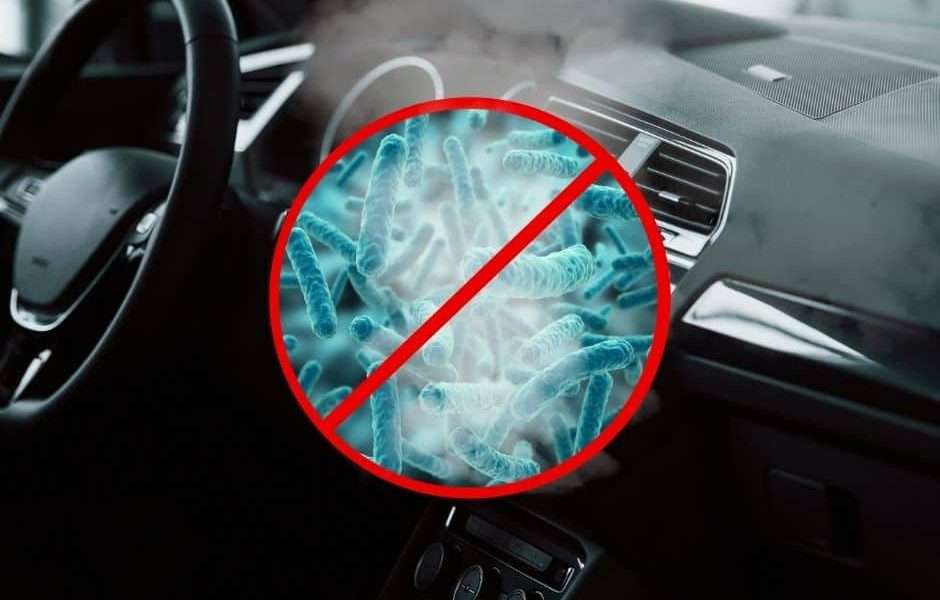The quest for a truly clean car interior can often feel like an endless battle against dust‚ allergens‚ and lingering odors. Traditional cleaning methods‚ while helpful‚ may only address surface-level issues‚ leaving behind hidden contaminants that affect air quality. Ozone car interior cleaning presents a novel solution‚ harnessing the power of ozone gas to sanitize and deodorize vehicle interiors effectively. This innovative approach promises a deeper clean‚ eliminating odors at their source and offering a healthier driving environment. Exploring the benefits and potential drawbacks of ozone car interior cleaning is crucial for making informed decisions about vehicle maintenance.
Ozone (O3) is a naturally occurring gas composed of three oxygen atoms. It’s a powerful oxidizing agent‚ meaning it can break down organic molecules‚ including those responsible for unpleasant odors and microbial growth. In car interior cleaning‚ ozone generators are used to produce ozone gas‚ which permeates the vehicle’s cabin‚ reaching even the most inaccessible areas.
How Does Ozone Cleaning Work? - Ozone Generation: A specialized ozone generator converts oxygen (O2) into ozone (O3).
- Cabin Saturation: The ozone gas is released into the car’s interior‚ filling the entire space.
- Oxidation Process: Ozone molecules react with odor-causing molecules‚ bacteria‚ viruses‚ and mold spores‚ breaking them down and neutralizing them.
- Decomposition: After the treatment‚ the ozone naturally reverts back to oxygen (O2)‚ leaving behind a cleaner and fresher environment.
Ozone cleaning offers several advantages over traditional methods:
- Odor Elimination: Effectively removes stubborn odors from smoke‚ pets‚ mildew‚ and food.
- Disinfection: Kills bacteria‚ viruses‚ and mold spores‚ promoting a healthier cabin environment.
- Deep Cleaning: Reaches areas that are difficult to access with conventional cleaning tools.
- No Chemical Residue: Ozone decomposes into oxygen‚ leaving no harmful chemical residue behind.
While ozone cleaning offers significant benefits‚ it’s essential to be aware of the potential drawbacks:
- Potential Health Risks: Exposure to high concentrations of ozone can be harmful to human health‚ causing respiratory irritation. It’s crucial to ensure the car is thoroughly ventilated after treatment before entering.
- Material Degradation: Prolonged or excessive ozone exposure may potentially damage certain materials‚ such as rubber‚ plastics‚ and leather.
- Not a Substitute for Physical Cleaning: Ozone cleaning is most effective when combined with physical cleaning to remove visible dirt and debris.
Here’s a comparative table highlighting the key differences between ozone cleaning and traditional car interior cleaning methods:
| Feature | Ozone Cleaning | Traditional Cleaning (Vacuuming‚ Wiping) |
|---|---|---|
| Odor Removal | Highly effective at eliminating odors at their source. | Masks odors temporarily; may not eliminate the source. |
| Disinfection | Kills bacteria‚ viruses‚ and mold spores. | Primarily removes surface contaminants. |
| Reach | Reaches all areas of the car interior‚ including hard-to-reach spots. | Limited to accessible surfaces. |
| Chemical Residue | Leaves no chemical residue; | May leave chemical residue from cleaning products. |
The quest for a truly clean car interior can often feel like an endless battle against dust‚ allergens‚ and lingering odors. Traditional cleaning methods‚ while helpful‚ may only address surface-level issues‚ leaving behind hidden contaminants that affect air quality. Ozone car interior cleaning presents a novel solution‚ harnessing the power of ozone gas to sanitize and deodorize vehicle interiors effectively. This innovative approach promises a deeper clean‚ eliminating odors at their source and offering a healthier driving environment. Exploring the benefits and potential drawbacks of ozone car interior cleaning is crucial for making informed decisions about vehicle maintenance.
Understanding Ozone Cleaning for Cars
Ozone (O3) is a naturally occurring gas composed of three oxygen atoms. It’s a powerful oxidizing agent‚ meaning it can break down organic molecules‚ including those responsible for unpleasant odors and microbial growth. In car interior cleaning‚ ozone generators are used to produce ozone gas‚ which permeates the vehicle’s cabin‚ reaching even the most inaccessible areas.
How Does Ozone Cleaning Work? - Ozone Generation: A specialized ozone generator converts oxygen (O2) into ozone (O3).
- Cabin Saturation: The ozone gas is released into the car’s interior‚ filling the entire space.
- Oxidation Process: Ozone molecules react with odor-causing molecules‚ bacteria‚ viruses‚ and mold spores‚ breaking them down and neutralizing them.
- Decomposition: After the treatment‚ the ozone naturally reverts back to oxygen (O2)‚ leaving behind a cleaner and fresher environment.
Benefits of Ozone Car Interior Cleaning
Ozone cleaning offers several advantages over traditional methods:
- Odor Elimination: Effectively removes stubborn odors from smoke‚ pets‚ mildew‚ and food;
- Disinfection: Kills bacteria‚ viruses‚ and mold spores‚ promoting a healthier cabin environment.
- Deep Cleaning: Reaches areas that are difficult to access with conventional cleaning tools.
- No Chemical Residue: Ozone decomposes into oxygen‚ leaving no harmful chemical residue behind.
Potential Drawbacks and Safety Considerations
While ozone cleaning offers significant benefits‚ it’s essential to be aware of the potential drawbacks:
- Potential Health Risks: Exposure to high concentrations of ozone can be harmful to human health‚ causing respiratory irritation. It’s crucial to ensure the car is thoroughly ventilated after treatment before entering.
- Material Degradation: Prolonged or excessive ozone exposure may potentially damage certain materials‚ such as rubber‚ plastics‚ and leather.
- Not a Substitute for Physical Cleaning: Ozone cleaning is most effective when combined with physical cleaning to remove visible dirt and debris.
Comparing Ozone Cleaning to Traditional Methods
Here’s a comparative table highlighting the key differences between ozone cleaning and traditional car interior cleaning methods:
| Feature | Ozone Cleaning | Traditional Cleaning (Vacuuming‚ Wiping) |
|---|---|---|
| Odor Removal | Highly effective at eliminating odors at their source. | Masks odors temporarily; may not eliminate the source; |
| Disinfection | Kills bacteria‚ viruses‚ and mold spores. | Primarily removes surface contaminants. |
| Reach | Reaches all areas of the car interior‚ including hard-to-reach spots. | Limited to accessible surfaces. |
| Chemical Residue | Leaves no chemical residue. | May leave chemical residue from cleaning products. |

